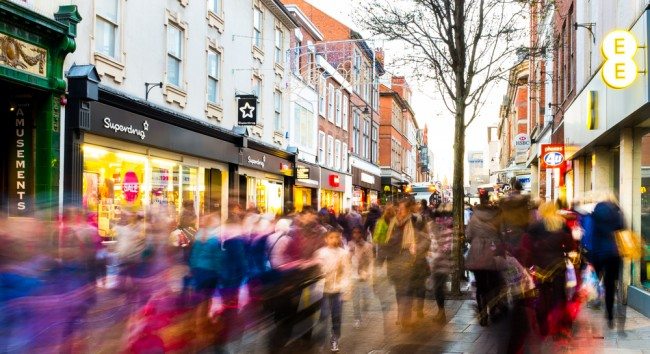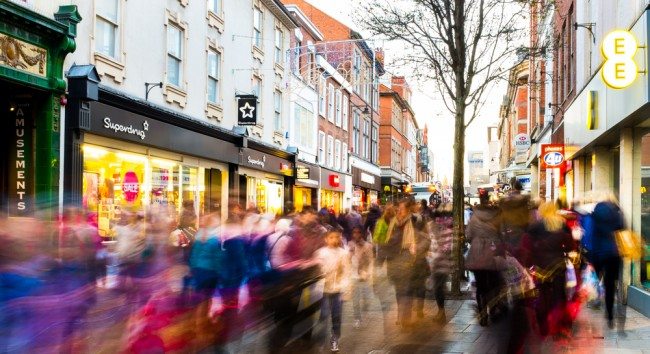
The past decade has seen significant transformation in the retail industry.
Technologies have emerged, customer behaviour has developed, famous brands have fallen and it has shaped the way our high streets look today.
But what are the trends will affect the way we shop in the coming years? We spoke to four retail and technology experts about the developments that will shape the industry in 2019 and beyond:
Powerful retail ecosystems aim to make our lives easier
“One of the key trends I have noticed in retail in 2018 was the decline in the number of major standalone players, while “retail ecosystems” seem to be building and developing at pace. Perhaps the first significant sign of this was when Amazon purchased Whole Foods in 2017, but it has snowballed in 2018, and going into 2019, the trend is turbocharged.
The Whole Foods acquisition was a wake-up call for a lot of people who head up retail organisations, and in 2018, many US retailers quickly extended their partnership with front-end e-commerce solution, Instacart. Walmart opened up a collaboration with JD.com, which was founded by the Chinese Tencent, as well as setting up a retail partnership with Google Home to compete against Amazon Alexa, and investing in Flipkart from India. Kroger found a Chinese partner in Alibaba, Amazon partnered with Monoprix, while Google established an e-commerce partnership with Carrefour.
This combination of channels, talent and resources is creating even stronger players in the retail world. They are all aiming to achieve scale while dealing with modern customer needs better than their competitors, and I believe the same evolution will happen in other industries too.”
Prof. Steven van Belleghem is an expert in customer experience in the digital world, and the author of Customers The Day After Tomorrow
Retailers get smart with marketing spend
“In some ways it feels inevitable that bricks and mortar retail will continue to face an uphill battle in 2019, as online shopping becomes ever-more the norm. Faster, cheaper delivery and easier returns have enabled a generation of shoppers to stay away from physical retail entirely!
Yet… I can’t help but feel that a turning point is coming. Through the last few months of 2018 I’ve been hearing the same cry for help from almost all my retail clients… “What can we do to decrease our reliance on PPC!?”. Pay-per-click, it seems, has become the very expensive ‘bricks and mortar’ of the online world, and dare I say, it always was!
My advice to both online and offline retailers is to try to understand the true incremental impact from PPC, and even more importantly, the impact of brand advertising on your business. This is vital whether you’re running a TV campaign, a website launch or improvement or a one of a kind experience, because by understanding how to successfully build a brand that truly stands out from the crowd is the only way any retailer can actually distinguish themselves from the pack and beat the legacy of bricks and mortar or threat of PPC.”
Ruan van der Venter is a Director at Brightblue Consulting, a consultancy that works closely with retail clients to improve their marketing effectiveness.
Retailers embrace the possibilities new technologies bring
“Ecommerce sales are growing at twice the pace of those generated in stores. This is an indicator of the accelerating pace of consumer adoption and demonstrates just how important a differentiator tech-enabled speed, convenience, choice and transparency has become during the average shopping journey.
These are therefore the main customer-facing capabilities that retailers should look to harness from their short-to-midterm tech strategies through 2019. The main technology-based drivers of change they should exploit are: ubiquitous connectivity, pervasive interfaces and autonomous computing.
With more than 60% of the world’s population expected to have always-oninternet access via mobile by 2020, more consumers will expect to use their mobile to navigate the store just as they do online. This will include “near me” search, mobile payments and scan-and-pay checkout applications.
As touch becomes the most popular computing interface thanks to mobile, this will fuel experimentation with retail-focused visual search, augmented reality (AR) and voice-based applications to remove further friction, not just from perspective of the user experience, but also from physical shopping journeys.
So, retailers must not forget how important AI and the autonomous, self-learning capabilities it endows will continue to be for the likes of Amazon, for example – with its Alexa-based app and devices, but also through its recommendation engine, robot-based warehouses and Go checkout-less convenience stores.”
Miya Knights is author of Amazon: How the World’s Most Relentless Retailer will Continue to Revolutionize Commerce, written with Natalie Berg
Shoppers say goodbye to queues
“Earlier this year, Amazon announced that they are rolling out their successful Amazon Go “checkout-less” concept to 3,000 locations over the next 3 years, with the first UK site rumoured to be on Oxford Street in London. In China, JD.com recently revealed plans to expand their own ‘unmanned’ stores, while Saturn also anounced they’re embracing the ‘cashierless’ trend by deploying our mobile self-checkout system in the world’s biggest consumer electronics store in Germany.
The idea of going into a shop, picking up and paying for an item, and then simply walking out without having to queue used to sound crazy. In 2019, however, this level of convenience will become a reality for many shoppers, and it won’t take long before customers come to expect this kind of convenience as standard. Convenience has become the new loyalty, and companies that fail to recognise this could be left behind.”
Mustafa Khanwala is the founder and CEO of MishiPay, whose innovative “Scan, Pay, Leave” technology enables mobile self-checkout in retail.

